When considering the ideal concrete coating for your home, envision a scenario where your patio requires a durable, aesthetically pleasing surface that can withstand heavy foot traffic and changing weather conditions. How do you navigate the many options to select the perfect coating that fits your requirements, like a glove? By deciphering the complexities of surface needs, budget constraints, and design preferences, you can embark on a journey to discover the ideal concrete coating that will elevate your home’s appeal and provide long-lasting protection.
Key Takeaways
- Assess surface needs: Evaluate condition, traffic, and purpose.
- Consider budget: Material, labor, and maintenance costs.
- Explore design options: Colors, patterns, overlays.
- Prioritize durability: Choose UV chemical resistance.
- Upkeep plan: Regular cleaning and sealant reapplication.
Types of Concrete Coatings
When considering types of concrete coatings for your home, it’s crucial to understand the various options available to make an informed decision. Concrete coatings enhance the aesthetic appeal of your surfaces and provide protection and durability.
One common option is acrylic coatings, which are versatile and suitable for various surfaces such as driveways, patios, and garage floors. Acrylic coatings are known for their UV resistance and ability to withstand harsh weather conditions, making them popular for outdoor applications.
Another popular choice is epoxy coatings, which offer exceptional durability and resistance to chemicals. These coatings create a seamless, high-gloss finish that’s easy to clean and maintain, making them ideal for garage floors and industrial settings.
Polyurea coatings are also gaining popularity due to their fast cure time and high abrasion resistance. These coatings are often used in high-traffic areas requiring a durable finish.
For a more decorative touch, consider decorative concrete overlays. These coatings allow you to customize your surfaces with various colors, patterns, and textures, giving your home a unique and personalized look. Whether you’re looking for durability, aesthetics, or both, concrete coating options are available to suit your specific needs and preferences.
Assessing Your Surface Needs
To effectively assess your surface needs for concrete coatings, you must first examine the current condition and usage requirements of the specific areas you intend to coat.
Begin by evaluating the condition of the concrete surface. Look for any existing damage, such as cracks, spalling, or discoloration. These issues may require specific coatings or repairs before applying a new coating. Additionally, consider the level of foot traffic or potential exposure to chemicals or moisture in the area. Understanding these factors will help you choose a coating that can withstand the demands of the environment.
Next, analyze the purpose of the coated surface. Will it be in a high-traffic area like a garage or a decorative space like a patio? Different coatings offer varying levels of durability, slip resistance, and aesthetic appeal.
For instance, an epoxy coating might be suitable if you want a glossy finish for a showroom floor. On the other hand, a polyurea coating could be more appropriate for a driveway that needs to withstand heavy vehicles.
Budget Considerations
After evaluating the condition of your concrete surface and determining the specific requirements for the area you plan to coat, your budget is the next critical factor to consider. When deciding on a concrete coating, consider the cost implications to ensure the project aligns with your financial capabilities. Here are some budget considerations to keep in mind:
- Material Costs: Different types of concrete coatings have varying price points. Evaluate the cost of the materials required for the coating you desire.
- Labor Costs: Factor in the cost of labor for surface preparation and application of the concrete coating. Skilled labor may be more expensive but can ensure a professional finish.
- Maintenance Expenses: Consider the long-term maintenance costs associated with the type of coating you choose. Some coatings may require frequent resealing or touch-ups, impacting the overall cost.
- Additional Expenses: Anticipate any extra expenses such as equipment rentals, surface repairs, or any unforeseen circumstances that may arise during the coating process. Having a buffer in your budget can help you tackle unexpected costs without derailing your project.
Aesthetics and Design Options
Considering the aesthetics and design options for your concrete coating is crucial in achieving your space’s desired look and functionality. The design of your concrete coating can greatly influence the overall ambiance of a room, so it’s important to choose a style that complements your existing decor or desired theme.
When selecting a concrete coating, you have various design options. Decorative concrete coatings can replicate the look of natural materials like stone, brick, or wood, providing a cost-effective alternative to traditional flooring options.
Stamped concrete coatings offer intricate patterns and textures that can enhance the visual appeal of your space. Staining and coloring options allow you to customize the hue of your concrete coating, adding depth and dimension to the surface.
In addition to design choices, consider incorporating decorative elements such as borders, medallions, or stenciled patterns to personalize your concrete coating further. These embellishments can create a unique and eye-catching focal point in your space, adding a touch of individuality to your home.

Durability and Longevity Factors
Durability and longevity are key factors when selecting a concrete coating for your home. Ensuring the coating you choose is durable and long-lasting protects your concrete surfaces and saves you time and money in the long run. Here are some important factors to keep in mind:
- Material Quality: Opt for high-quality concrete coatings specifically designed for the surface you’re coating. Look for products known for their durability and resistance to wear and tear.
- UV Resistance: Choose a coating that offers UV protection, particularly if your concrete surfaces are exposed to sunlight. UV rays can cause discoloration and deterioration over time, so a UV-resistant coating will help maintain the appearance and integrity of your surfaces.
- Chemical Resistance: Consider the chemicals or substances that may come into contact with your coated surfaces. Select a coating resistant to these chemicals to prevent damage or staining.
- Abrasion Resistance: If your concrete surfaces are subject to heavy foot traffic or vehicular use, opt for a high abrasion-resistant coating. This will help maintain the coating’s appearance and performance under heavy use.
Application Methods and Complexity
To properly apply a concrete coating, it’s important to understand the various methods and complexities involved. Different application methods are available, each with its level of complexity and suitability for specific projects. The most common methods include spraying, rolling, and applying with a trowel.
Spraying is a method that involves using a specialized sprayer to coat the concrete surface evenly. This method is efficient for large areas but requires skill to ensure an even application.
On the other hand, rolling involves using a paint roller to apply the coating. It’s a more straightforward method suitable for DIY projects and smaller areas.
Applying with a trowel is a manual method that allows for greater control over the thickness and texture of the coating. However, it’s a more labor-intensive process.
The complexity of the application process also depends on the type of coating being used. Some coatings require multiple layers and specific curing times between coats, adding to the overall complexity of the application. Additionally, factors such as surface preparation, environmental conditions, and safety precautions further contribute to the complexity of the process.
Understanding the different application methods and complexities involved in applying a concrete coating is essential for achieving a successful and durable finish that meets your needs.
Maintenance Requirements
When considering the maintenance requirements for concrete coatings, you need to focus on durability considerations and cleaning methods. Understanding the coating’s durability helps you anticipate its lifespan and plan for necessary touch-ups or reapplications.
Regular cleaning and upkeep are essential to prolong the life of the coating and maintain its appearance.
Durability Considerations
Consider the maintenance requirements of the concrete coating you select for your home as a critical factor in its long-term durability. To ensure the longevity and effectiveness of your concrete coating, here are some key durability considerations to keep in mind:
- Sealing Frequency: Opt for a concrete coating that requires minimal resealing to maintain its protective properties. Regular sealing can help prevent moisture penetration and protect against staining.
- Resistance to Wear and Tear: Choose a coating resistant to abrasion, impact, and other forms of physical wear to ensure it remains intact and functional over time.
- UV Protection: Look for a coating that offers UV resistance to prevent color fading and deterioration caused by exposure to sunlight.
- Chemical Resistance: Select a coating that can withstand exposure to chemicals such as oil, grease, and cleaning agents to maintain its appearance and protective qualities.
Cleaning and Upkeep
Understanding the cleaning and upkeep requirements to maintain your chosen concrete coating’s pristine condition is imperative for optimal performance and longevity. Regular maintenance is key to preserving the appearance and functionality of your concrete coating.
Start by sweeping or vacuuming the surface to remove dirt, dust, or debris. For tougher stains, use a gentle cleaning solution of mild soap and water. Avoid harsh chemicals or abrasive cleaners, as they can damage the coating.
Periodically pressure wash the surface to remove ingrained dirt and grime. Depending on the wear and tear the coating endures, it’s recommended to reapply a protective sealant every 1-3 years.
Inspect the coating for any signs of wear, such as cracks or peeling, and address them promptly to prevent further damage. By adhering to these cleaning and upkeep practices, you can prolong the life of your concrete coating and keep it looking its best for years.
After carefully assessing your surface needs, budget considerations, and design preferences, you are ready to choose the right concrete coating for your home. Remember to prioritize durability and longevity factors to ensure a lasting finish. With proper maintenance and upkeep, your chosen coating will enhance your home’s aesthetic appeal and provide long-term protection against wear and tear. Make sure to apply the coating using suitable methods to achieve a professional and polished look.

